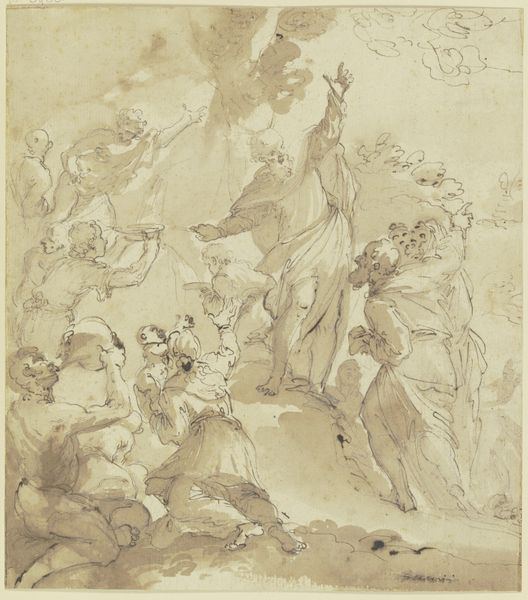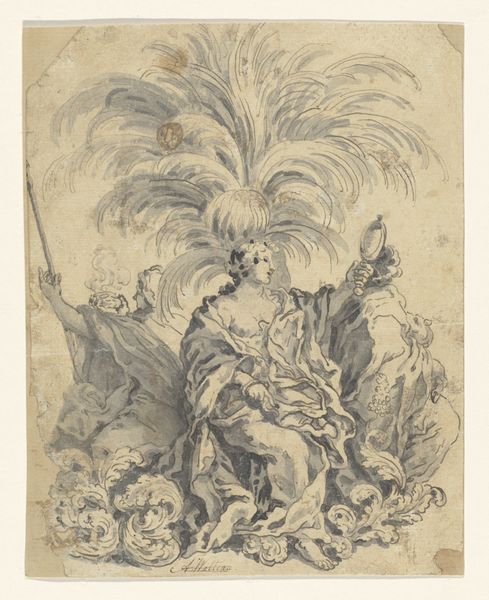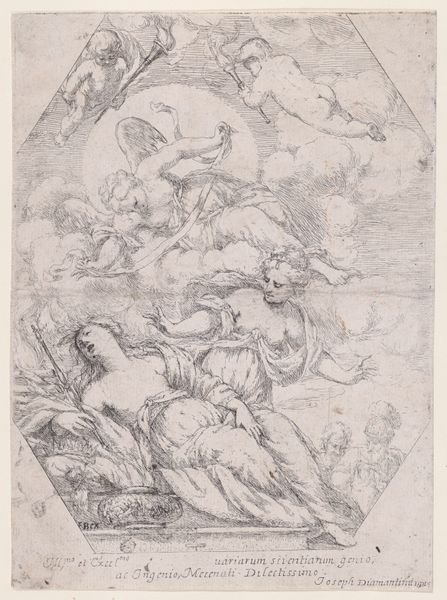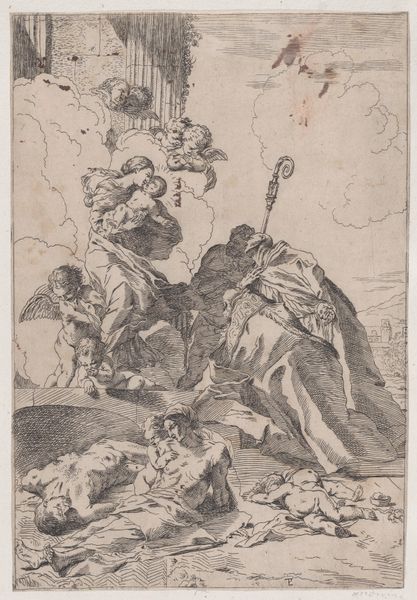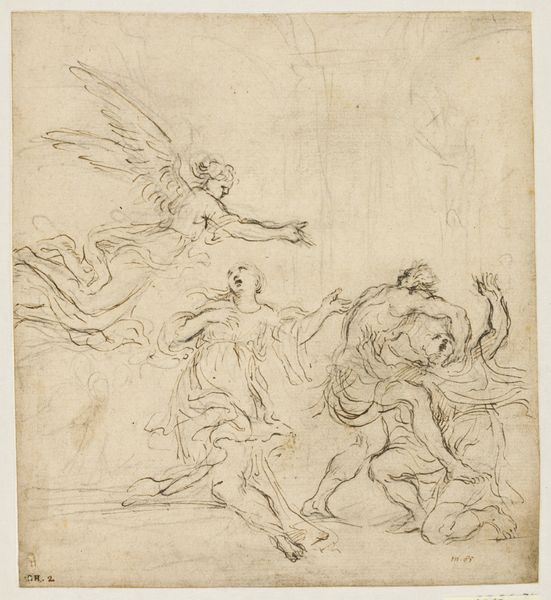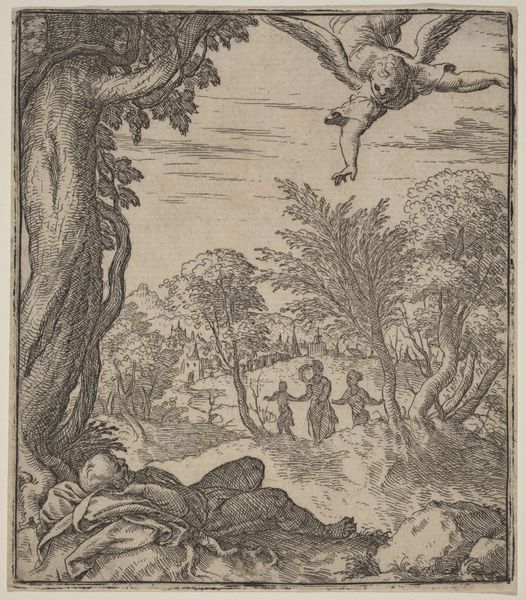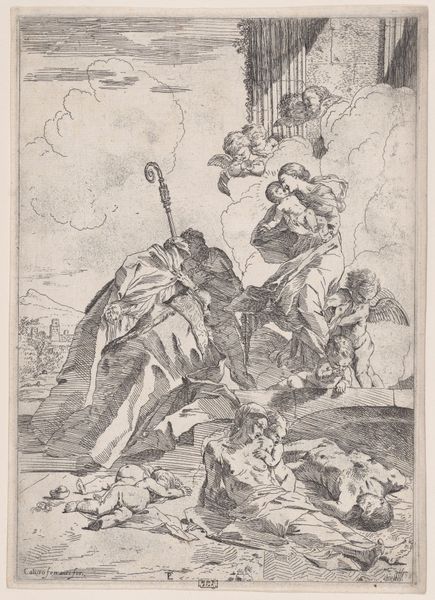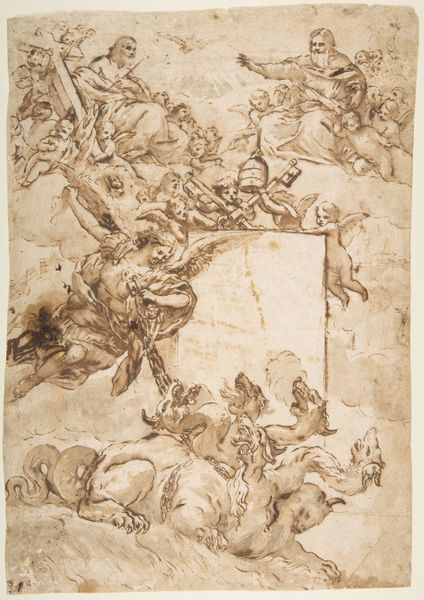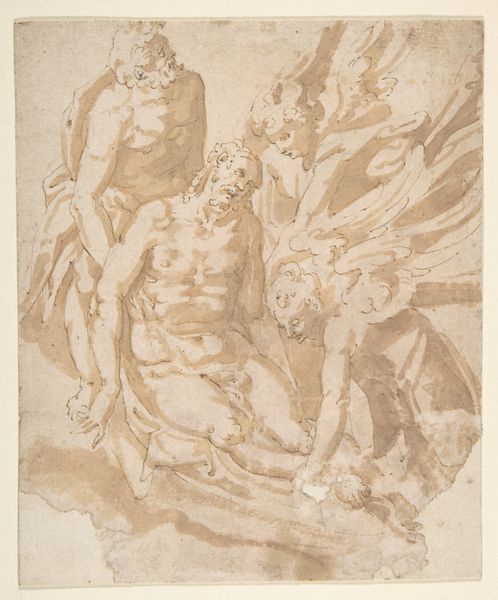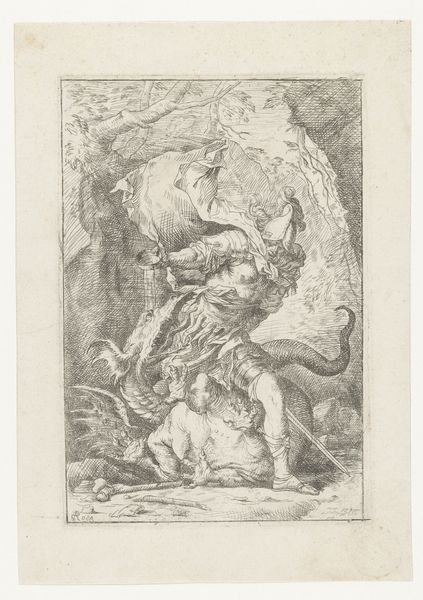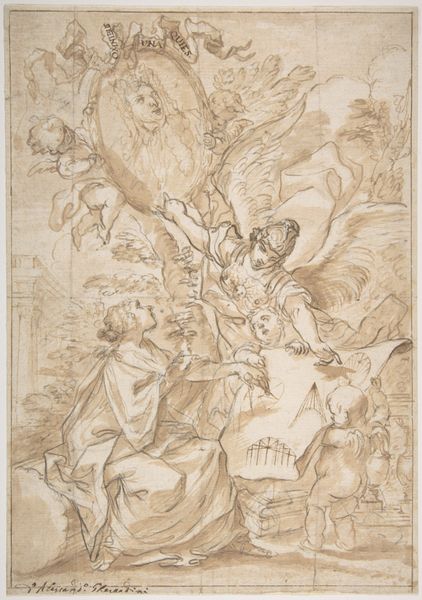
Apollo at right holding a bow chasing Daphne at the left 1533 - 1543
0:00
0:00
drawing, print, engraving
#
drawing
# print
#
pen sketch
#
pencil sketch
#
mannerism
#
figuration
#
mythology
#
pen work
#
history-painting
#
italian-renaissance
#
engraving
Dimensions: sheet: 6 5/16 x 3 15/16 in. (16 x 10 cm)
Copyright: Public Domain
Editor: This engraving, "Apollo at right holding a bow chasing Daphne at the left," by Andrea Schiavone, dates from between 1533 and 1543. It’s a dramatic scene, and the linework gives it a sense of urgency. What can you tell me about it? Curator: Looking at this piece, I see a visual embodiment of power dynamics, specifically the mythological pursuit of Daphne by Apollo. Schiavone places the viewer directly into this moment of transformation and forced fleeing. How does this scene make you feel when viewed through the lens of bodily autonomy and the power imbalances inherent in such a chase? Editor: I guess I hadn’t considered it that way, I was just thinking about it as a mythological story, but I see what you mean about bodily autonomy. So Daphne's transformation into a tree—is it a metaphor? Curator: Exactly. Think of the tree not as escape but as a painful disruption, a loss of agency, and the physical form through violence. Mannerism, the style that Schiavone employs, often uses exaggeration and distortion. Where do you see evidence of this within the work? Editor: The contorted figures, definitely. Daphne’s upward reach is almost unnatural, and Apollo's pose feels strained. Is that meant to emphasize the psychological turmoil? Curator: Absolutely. The tension between desire and unwilling transformation speaks volumes. Consider how societal structures of the time period might have justified and normalized such power imbalances, perpetuating these themes in art. What impact do you think this visual language has on its viewers, both historically and today? Editor: It’s unsettling. Seeing it like this makes the myth much less romantic and much more disturbing. It highlights the violence inherent in the narrative. I see how the Mannerist style amplifies the emotional impact and complicates the original myth. Curator: Precisely. Analyzing the historical context and power structures challenges our reading, creating new avenues of thought. Editor: Thanks, I’ll definitely think differently about classical art now.
Comments
No comments
Be the first to comment and join the conversation on the ultimate creative platform.
